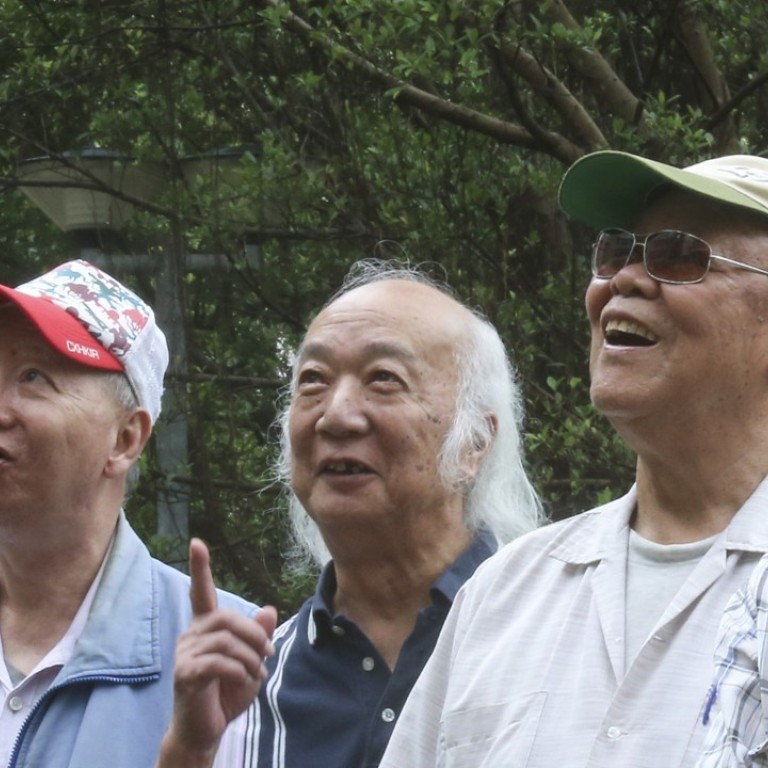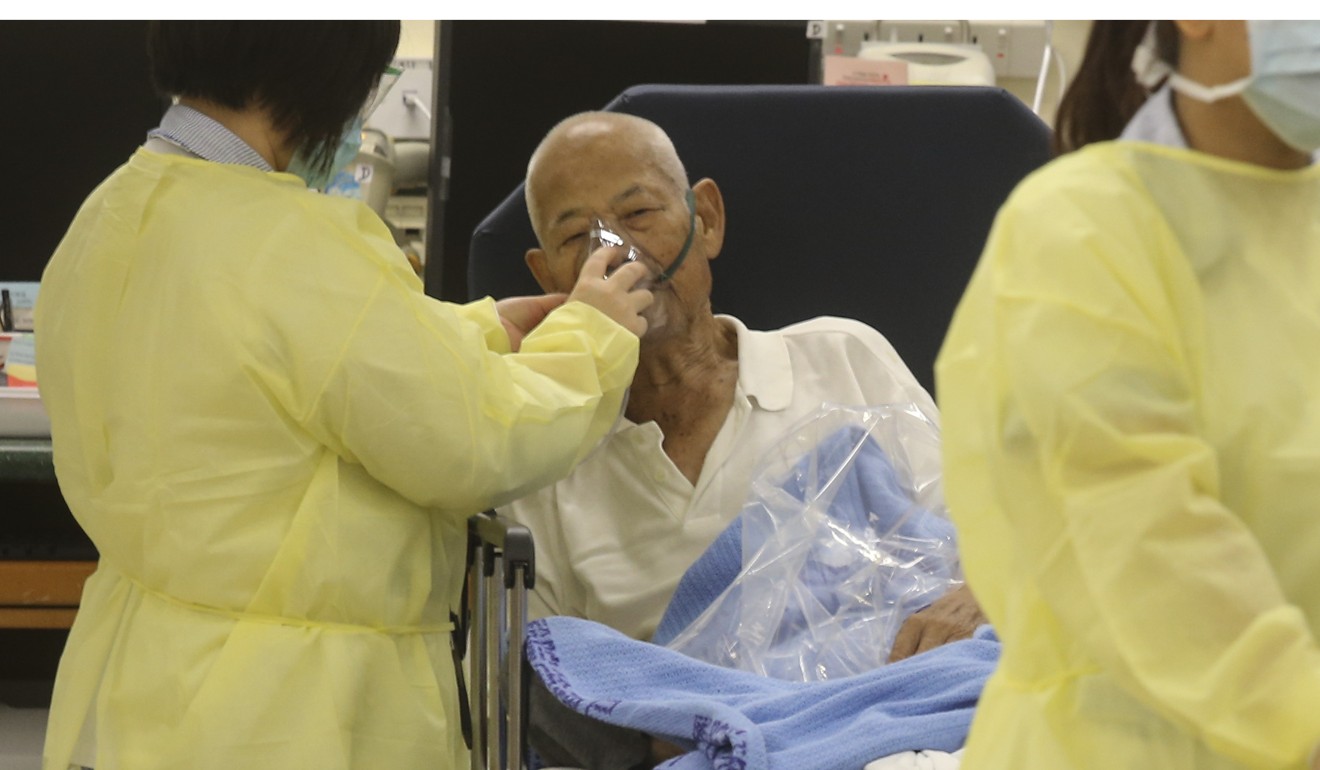
Hong Kong’s health priority should be elderly care in the community not more hospitals
If Carrie Lam can build a well-coordinated programme of home and community based elderly care, we will all be in her debt
If Carrie Lam’s administration is to be measured in terms of focusing on the burning social issues of the day, and of listening to community and expert thoughts, then so far she scores 10 out of 10.
Nowhere is this more so than in the areas of health care and elderly care, where I confess I have a strong bias, and have been keenly engaged with the Business Professionals Federation in lobbying the administration for many years. So far, that lobbying has fallen on deaf ears.
At last, thanks to a shift to prioritise the bread and butter challenges that face our community, I sense the government is listening, and I feel optimistic that action can happen – despite clear controversies along the way.
Our starting position, as outlined in the recently published BPF paper “Towards Longer Productive Living – Elderly and End of Life care in Hong Kong” , is simple: “Hospitals are in crisis as they struggle to address demands which they are not best equipped to handle.
They are being swamped by the consequences of longer living and of modern lifestyle – chronic diseases and reduced capacity, both mental and physical into extreme old age.
“The answer does not lie in more hospitals and more hospital beds nor in increased institutional care. These are capital intensive and do not provide best life quality care,” says the report.
“It lies instead in a reallocation of priorities and resources, both infrastructure and, above all, skills, towards prevention in the first place to promote lifelong health, towards better primary care with more multidisciplinary clinics and, specifically for the elderly, towards care in the community and in the home.”
Dying at home is almost impossible with 90 per cent of deaths now in a hospital bed – far higher than international norms … Less than 5,000 Hong Kong people die annually outside hospital and only 300 in hospice beds … End of life care at home is currently far too rare in Hong Kong
The headline conclusion of this work is that the HK$200 billion (US$25.62 billion) that the Government has set aside to build new hospitals is likely to be money ill-spent.
If investment were instead put into community-based clinics and wellness facilities across Hong Kong, then the mounting pressure on hospital facilities would evaporate.
In theory, the government has had an “ageing in place” policy on the statute book since it established the Elderly Commission 20 years ago.
At that point, the proportion of Hong Kong’s population aged over 65 was below 10 per cent. Today, this has grown to 16 per cent, and before 2040 it will sit at 25 per cent.
With half of our population expected to live beyond the age of 100 – compared with just 5 per cent 50 years ago – the need to prioritise this issue ought to be self-evident. A fifth of households are now elderly with as many as 250,000 currently inadequately housed, and 20,000 more homes projected to be occupied by the elderly in the next decade alone.

Already Hong Kong has around 100,000 people suffering varying stages of dementia, and domestic helpers (with not even minimal medical training) are providing care to 40,000 elderly people who live at home alone, and this number is set to explode.
In spite of these developments – and the official endorsement of ageing in place as a policy priority, little has been done.
Most homes still lack simple facilities that would enable the elderly to stay at home in their declining years – like bars fitted in the toilet to help people on and off a toilet, or doors wide enough to let a wheelchair pass, or alarm buttons that would alert nearby carers to an emergency need.
The answer does not lie in more hospitals and more hospital beds … It lies in prioritising lifelong health, towards better primary care with more multidisciplinary clinics and, specifically for the elderly, towards care in the community and in the home
Most communities lack neighbourhood facilities for the elderly to deal with their various chronic ailments without travelling to overstretched district hospitals. The elderly carer workforce needed to enable people to age at home has never been developed.
As a result, more than 50 per cent of Hong Kong’s hospital beds are today occupied by older citizens in various stages of decline towards death.
As the BPF report noted: “Dying at home is almost impossible with 90 per cent of deaths now in a hospital bed – far higher than international norms … Less than 5,000 Hong Kong people die annually outside hospital and only 300 in hospice beds … End of life care at home is currently far too rare in Hong Kong.”
Probably because of this, Hong Kong is ranked 22nd out of 80 countries in The Economist Intelligence Unit’s Quality of Death Index, far behind Taiwan (6th), Singapore (12th) or South Korea (18th).
So Carrie Lam’s Policy Address commitment to change in this area is welcome, if overdue. Setting up a district health centre in Kwai Ching will provide a valuable template for building a network of community-based health care facilities across Hong Kong. We will need hundreds.
Creating a pilot scheme on home care and support for mildly impaired elderly people may also help. Cutting the massive HK$200 billion hospital-building budget and channelling at least half of this into building community health and wellness facilities, and making them compulsory in all new housing estates, would be a massive improvement, though it will no doubt take a big battle to wrest HK$100 billion away from the Hospital Authority’s ambitious hands.

Perhaps most important – but at the same time most controversial – is the imperative to train more carers, and to bring large numbers of medically trained carers in from overseas. Carrie Lam has committed to this, but already the trade unions have declared war.
My response to them is simple: already, the many thousands of Hong Kong families that cannot afford locally-qualified elderly carers are using untrained domestic helpers at HK$4,300 a month to provide the care they need.
This will not stop just because of trade union protest. Consultants Marsh and McLennon calculate there is a shortfall of 18.2 million professionally-trained long term carers in Asia Pacific.
This fast-growing need can be left to grow illicitly, using helpers lacking proper qualification, or it can be addressed with a properly tailored policy, with imported elderly carers being well-trained and better compensated than basic domestic helpers.
If Carrie Lam can build this well-coordinated programme of home and community based elderly care, we will all be in her debt.
She will ensure better quality of life for our elderly, and at less cost to the government in terms of capital spending and resource-expensive institutional care.
She will need to brave down the powerful Hospital Authority, get tough with housing developers, and brave down our trade unions. No small challenge. Let’s see if she is good to her word.
David Dodwell research and writes about global, regional and Hong Kong challenges from a Hong Kong point of view

